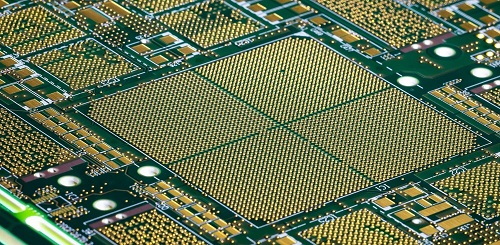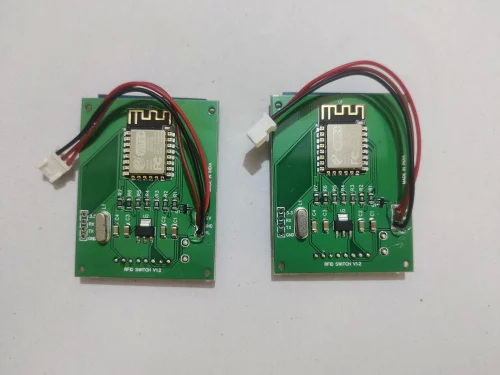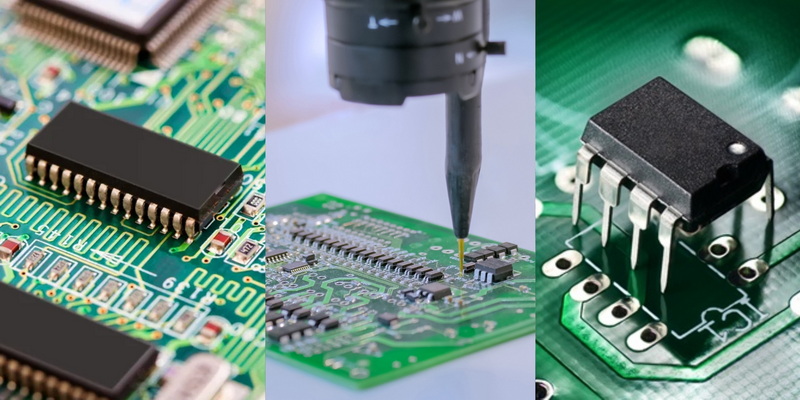Content Menu
● Understanding Solder Paste in SMT PCB Stencil Printing
>> What is Solder Paste?
>> Composition and Properties
● The SMT PCB Stencil Printing Process and Solder Paste's Role
>> Overview of Stencil Printing
>> Step-by-Step Process
>> Importance of Solder Paste Volume and Placement
● Interaction Between Solder Paste, SMT PCB Stencil, and Printing Machines
>> SMT PCB Stencil Design
>> Printing Machines
● Challenges and Best Practices in Solder Paste Stencil Printing
>> Common Challenges
>> Best Practices
● The Impact of Solder Paste Printing on Circuit Board Quality
● Conclusion
● FAQ
>> 1. What is the primary function of solder paste in SMT PCB stencil printing?
>> 2. Why is stencil design important for solder paste printing?
>> 3. How does the solder paste printing machine improve the SMT process?
>> 4. What are common problems encountered in solder paste stencil printing?
>> 5. How can solder paste printing quality be maintained?
● Citations:
Surface Mount Technology (SMT) has become the backbone of modern electronics manufacturing, enabling the assembly of highly complex printed circuit boards (PCBs) with miniature components. Central to this process is the precise application of solder paste through stencil printing, which ensures reliable electrical and mechanical connections. This article explores the critical role solder paste plays in SMT PCB stencil printing, the interaction with stencil design and printing machines, and the impact on circuit board quality and production efficiency.

Understanding Solder Paste in SMT PCB Stencil Printing
What is Solder Paste?
Solder paste is a viscous mixture composed primarily of powdered solder alloy and flux. The solder powder typically consists of metal alloys such as tin, silver, and copper, with particle sizes ranging from 20 to 45 micrometers. The flux component contains resins, activators, and solvents that facilitate soldering by cleaning oxidation from metal surfaces and improving wetting during reflow soldering. This paste acts as both an adhesive to hold surface mount devices (SMDs) in place and as the medium to form electrical connections once melted during reflow[5][8][11].
Composition and Properties
- Solder Powder: Fine spherical particles of lead-free alloys (e.g., 99.7% tin, 0.3% copper) compliant with RoHS regulations.
- Flux: A chemical agent that removes surface oxides and promotes solder flow and adhesion.
- Viscosity: Optimized to allow smooth transfer through stencil apertures without clogging or excessive spreading.
The rheology of solder paste is critical—it must be fluid enough to fill stencil apertures but viscous enough to stay in place on the PCB pads before reflow[5][10].
The SMT PCB Stencil Printing Process and Solder Paste's Role
Overview of Stencil Printing
Stencil printing is the process of depositing solder paste onto a PCB through a metal stencil that contains apertures matching the PCB's pad layout. This step is the foundation of SMT assembly, as it determines the amount and precise location of solder paste applied, directly impacting component placement and solder joint quality[3][9][10].
Step-by-Step Process
1. Stencil Preparation and Alignment:
The stainless steel stencil is mounted on the printing machine and aligned with the PCB using fiducial marks to ensure apertures correspond exactly to PCB pads[3][5][7].
2. Solder Paste Application:
Solder paste is evenly spread over the stencil surface using a squeegee blade that forces the paste into the stencil apertures. The paste fills the apertures, transferring the correct volume onto the PCB pads when the stencil is lifted[3][5].
3. Stencil Release:
The stencil is carefully separated from the PCB, leaving behind precise solder paste deposits on each pad. Proper release prevents smearing or bridging of paste between pads[3][10].
4. Component Placement and Reflow:
Surface mount components are placed onto the tacky solder paste deposits, which hold them in position. The PCB then undergoes reflow soldering, where the paste melts and solidifies to form strong mechanical and electrical joints[3][8].
Importance of Solder Paste Volume and Placement
The volume of solder paste deposited is a function of stencil aperture size, paste rheology, and printing parameters. Too little solder can cause weak joints or open circuits, while too much can lead to solder bridging and short circuits. Accurate stencil design combined with optimal solder paste characteristics ensures consistent, defect-free printing[2][10].

Interaction Between Solder Paste, SMT PCB Stencil, and Printing Machines
SMT PCB Stencil Design
The stencil is typically made from stainless steel foil with apertures laser-cut to match the PCB pad layout. The thickness of the stencil and aperture dimensions control the solder paste volume. For miniature SMT components with fine pitches, stencil thickness and aperture shape must be optimized to prevent defects like insufficient solder or bridging[3][7][14].
Printing Machines
Modern solder paste stencil printing machines automate the process with features including:
- Automated Optical Alignment: Ensures precise positioning of the stencil over the PCB.
- Controlled Squeegee Pressure and Speed: Provides uniform paste deposition.
- Conveyor Systems: Move PCBs through the printing station efficiently.
- Inspection Systems: Detect printing defects in real-time for quality assurance[5][13].
These machines enable high-speed, repeatable, and accurate solder paste printing essential for mass production of complex circuit boards.
Challenges and Best Practices in Solder Paste Stencil Printing
Common Challenges
- Stencil Clogging: Paste drying or residue can block stencil apertures, requiring regular cleaning.
- Misalignment: Causes paste to be deposited off-pad, leading to defective solder joints.
- Solder Bridging: Excess paste can connect adjacent pads, causing shorts.
- Insufficient Paste Volume: Results in weak mechanical bonds or open circuits[5][6][14].
Best Practices
- Regular Stencil Cleaning: Prevents clogging and maintains aperture integrity.
- Proper Storage and Mixing of Solder Paste: Maintains paste consistency and performance.
- Optimized Stencil Design: Aperture size, shape, and stencil thickness tailored to component specifications.
- Machine Calibration: Ensures consistent squeegee pressure and alignment.
- Environmental Controls: Temperature and humidity affect paste rheology and printing quality[5][6][7].
The Impact of Solder Paste Printing on Circuit Board Quality
The quality of solder paste printing directly influences:
- Solder Joint Reliability: Proper paste volume and placement ensure strong electrical and mechanical connections.
- Component Placement Accuracy: Paste tackiness holds components securely during placement and reflow.
- Yield and Defect Rates: Accurate printing reduces solder shorts, opens, and tombstoning defects.
- Production Efficiency: Automated stencil printing with reliable solder paste reduces rework and downtime[1][8][10].
Conclusion
Solder paste plays a pivotal role in SMT PCB stencil printing, serving as the medium that enables precise, controlled deposition of solder necessary for reliable component attachment and electrical connectivity. The interplay between solder paste composition, stencil design, and printing machine operation determines the quality and efficiency of the SMT assembly process. Mastery of solder paste printing ensures high-quality circuit boards with minimal defects, supporting the demands of modern electronics manufacturing.

FAQ
1. What is the primary function of solder paste in SMT PCB stencil printing?
Solder paste acts as both an adhesive to hold surface mount components in place and as the solder material that forms electrical and mechanical connections during reflow soldering[8][10].
2. Why is stencil design important for solder paste printing?
Stencil design controls the volume and location of solder paste deposited on PCB pads. Proper aperture size, shape, and stencil thickness ensure accurate paste transfer and prevent defects like bridging or insufficient solder[3][14].
3. How does the solder paste printing machine improve the SMT process?
The machine automates stencil alignment, controls squeegee pressure, and provides consistent paste application, increasing printing accuracy and production efficiency while reducing errors[5][13].
4. What are common problems encountered in solder paste stencil printing?
Common issues include stencil clogging, misalignment, solder bridging, and inconsistent paste volume, which can cause defective solder joints or shorts[5][6][14].
5. How can solder paste printing quality be maintained?
Maintaining quality involves regular stencil cleaning, proper solder paste storage and mixing, optimized stencil design, machine calibration, and controlling environmental factors like temperature and humidity[5][6][7].
Citations:
[1] https://www.myemssolutions.com/what-is-solder-paste-printing-and-its-role-in-smt-assembly/
[2] https://www.surfacemountprocess.com/solder-paste-printing-process.html
[3] https://www.elepcb.com/blog/pcb-stencil-smt-assembly/
[4] https://www.pcbunlimited.com/t/solder-paste-stencils
[5] https://www.linkedin.com/pulse/solder-paste-printing-smt-processing-oya-ouyang-tmktc
[6] https://www.assemcorp.com/en/frequently-asked-questions.html
[7] https://www.7pcb.com/blog/stencil-technology-smt-production
[8] https://www.technotronix.us/pcbblog/how-does-the-solder-paste-play-a-significant-role-in-pcb-smt-assembly/
[9] https://mpe.researchmfg.com/smt-qa/
[10] https://en.wikipedia.org/wiki/Stencil_printing
[11] https://www.protoexpress.com/kb/solder-paste/
[12] https://www.instructables.com/How-to-Order-a-SMT-Stencil/
[13] https://versae.com/smt-assembly-faq/
[14] https://jlcpcb.com/jp/blog/solder-paste-printing-for-miniature-smt-component
[15] https://www.pcbgogo.com/blog/Solder_Paste_SMT_Stencil.html




















